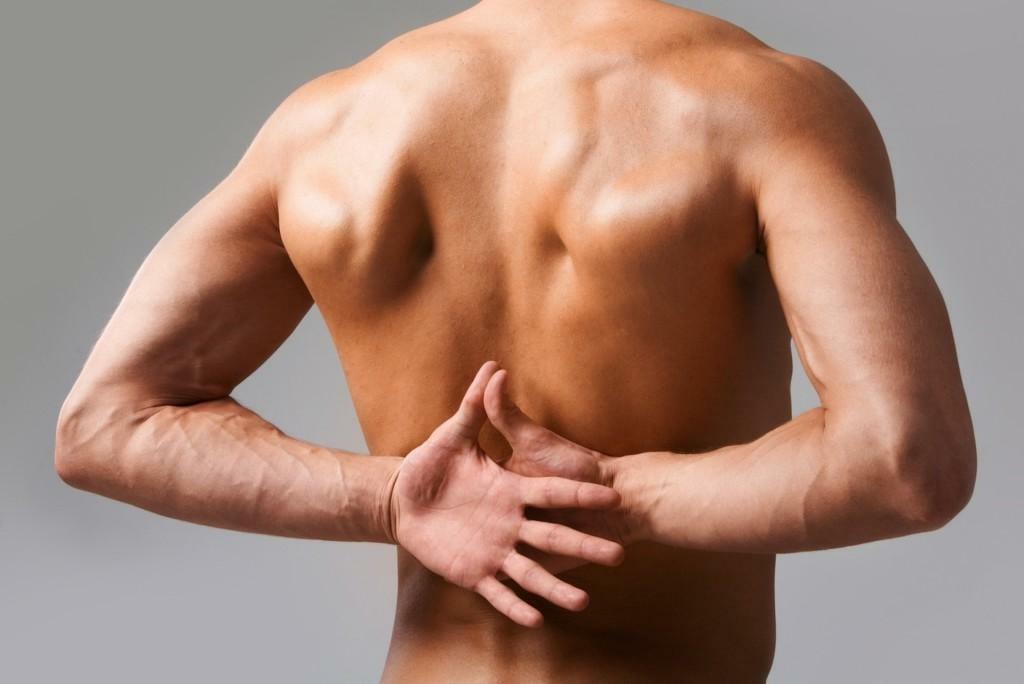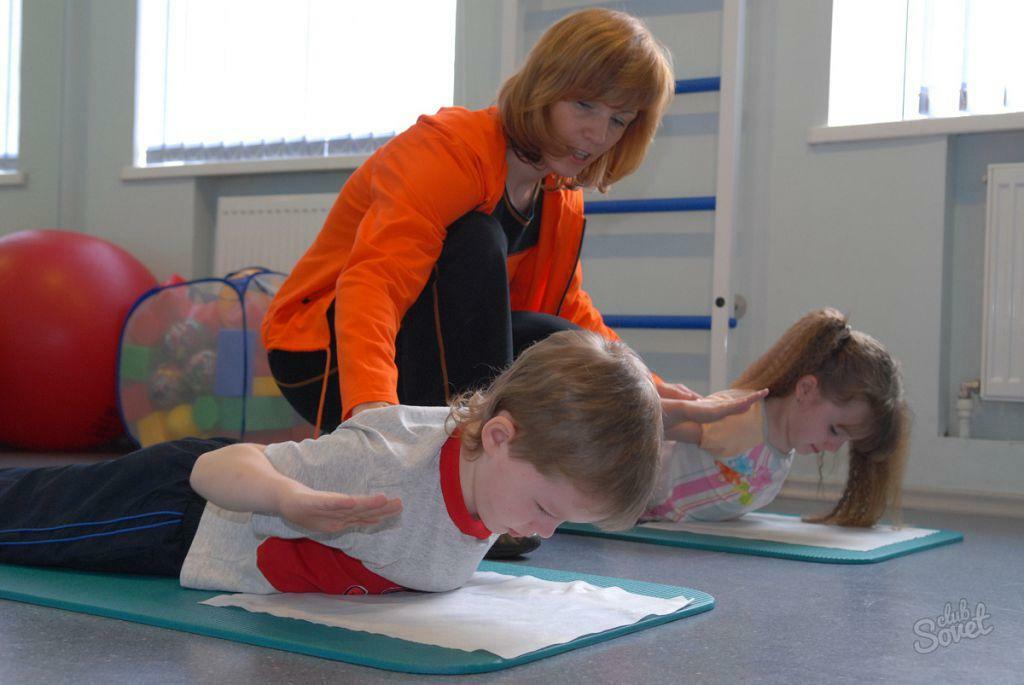When the channels of the spine are reduced, a pathological condition such as stenosis is diagnosed. The canal contains the roots of the spinal cord, which are squeezed due to the narrowing of the lumen. The symptomatology of the disease will depend on which rootlets have been squeezed. Stenosis develops slowly, but it is constantly progressing. Two ways of solving pathology are determined: operative and conservative. To surgical interventions resort very rarely, only in the absence of the effectiveness of drug therapy.

Stenosis of the lumbar spine of the lumbar spine
Content of the material
- 1 Causes of the disease
- 2 Classification of the ailment
- 3 Symptom
- 3.1 Video - Stenosis of the lumbar spine of the
- 4 Treatment methods
- 4.1 Surgical treatment
- 4.2 Video - Treatment of spinal stenosis
Causes of the disease
to determine the exact cause, it is necessary to have an understanding of the anatomical structure of the support system in the lumbar region. Bodies and arches that connect with ligaments are the main components of the spinal canal. The available space is filled with fatty tissue and liquid. With narrowing of the lumen, compression of the nerve is observed. As a result, there is a neurological symptomatology.
The primary cause of the pathological condition can be disc protrusion, tumor formations, hernia formations, various injuries in the back, arthrosis. If we consider the ailment in more detail, it should be noted that in medicine it is defined as secondary canal stenosis, since it is a consequence of other pathological conditions. If the stenosis is manifested as a primary disease, then the underlying cause is characterized by a congenital anomaly( if the fetus is damaged in the intrauterine development).
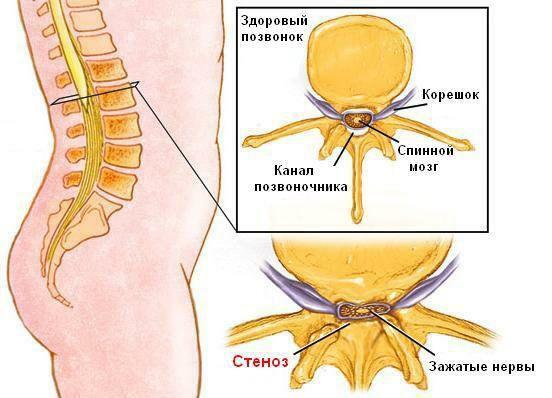
Stenosis of the spinal canal
The treatment of spinal stenosis can not be postponed because there is a risk of disruption of the transport function, due to which necessary nutrients are supplied to the spinal cord. As pressure increases, the blood vessels become squeezed, as a result, a sufficient volume of blood can not flow to the brain at the required rate. This pathology causes painful syndrome in the back area, which can give in the limbs.
Stenosis is caused by the following factors:
- changes, degenerative character - osteochondrosis, spondylosis, spondylolisthesis, intervertebral hernias, protrusions, thickening of intervertebral ligaments;
- damage and injury;
- consequences of surgical interventions;
- Bechterew's disease, rheumatoid arthritis, tumorous neoplasms in the lumbar spine region;
- acromegaly.
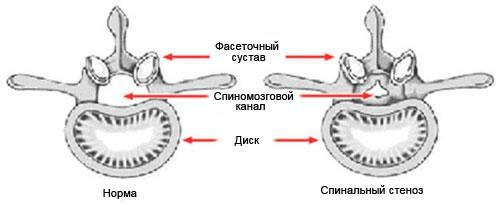
Healthy disk and disk for spinal stenosis
Note! What exactly is degenerative change is the most common underlying cause, which leads to the development of stenosis.
Classification of the disease
Several types of stenosis of the lumbar region are diagnosed in medical practice.
| Pathology type | Short description |
|---|---|
| Relative | This type of stenosis differs from the initial stage of development, which is characterized by a slight decrease in the tubule to 10 mm. There is practically no symptomatology, therefore it is diagnosed only with the help of research. Provides conservative treatment, which gives excellent predictions with the timely use of |
| Absolute | The diameter of the central spinal canal at this stage can narrow to almost 4 mm. This stage of pathology is not always amenable to drug treatment, so the operation |
| can be prescribed. Lateral | A critical narrowing that marks less than 3 mm. At this stage, operative treatment is mandatory. At the same time critical narrowing can be localized in any part of the spine |

Absolute stenosis
Symptomatic
This is a common medical pathology that affects the lumbar spine. The human body, in the course of age, undergoes changes of a degenerative nature. Therefore, the development of the disease occurs as a minor discomfort in the lower back. Then the periods of an exacerbation and recession of a symptomatology begin. However, pain can be exacerbated by an external factor, for example, excessive physical activity, sudden movement. The intensity of discomforting sensations does not occur immediately, but increases with time. This is explained by the fact that deformation does not happen suddenly, this requires a certain period. Compression is not immediately apparent, and at the first stage it can not be seen on its own.
Help! Nervous tissue is characterized by elasticity, so it is capable of stretching together with bone tissue. However, with maximum stretching, a strong soreness appears in the back.
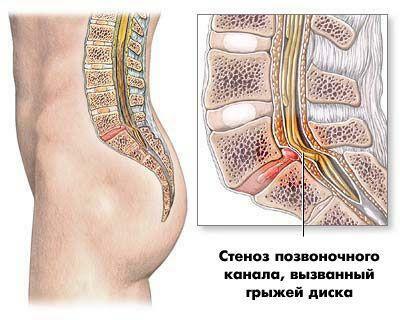
Stenosis of the spinal canal caused by disc herniation
Symptoms:
- Stenosis is characterized by traumatic pressure of the roots of the spinal cord.
- There is a puffiness of the roots.
- Pain in the lumbar region.
- Pain syndrome increases and becomes like burning.
- There are problems with blood supply to the nerve tissues in the back.
- Oxygen starvation of the spinal cord is noted.
- In the event of sudden movement, nerve compression may occur, and as a result it will stop working.
Attention! The development of stenosis can be seen on the gait of the patient, who becomes not only difficult to move, but also to stand with an even back, sometimes even to sit. The symptomatology progresses and in the absence of timely therapy leads to irreversible consequences.
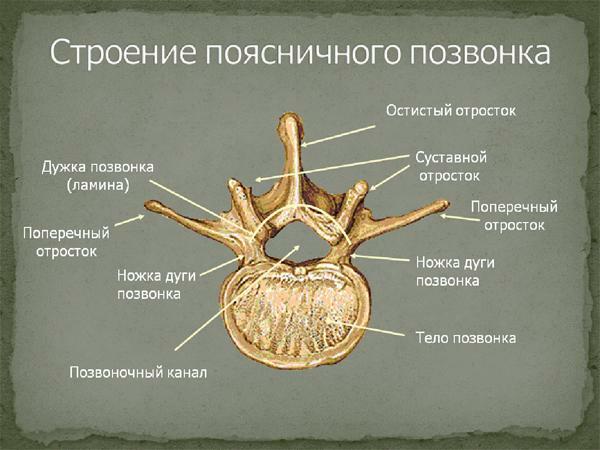
The structure of the lumbar vertebra
Men who are older than 50 years of age fall into the main risk group, as well as people traumatizing the back area. They have the following symptoms:
- intermittent claudication. This phenomenon is characterized by weakness in the lower limbs, a feeling of numbness arising during movements. Sometimes the patient can not even notice the pain, but a very unpleasant discomfort sensation that changes its location;
- severe pain syndrome. The level of soreness is so high that it is very difficult for the patient to move around, he has to stop, sit down, and sometimes even lie on his back wherever he is. When flexing the lower extremities in the hip joints, the pain subsides a little;
- painful sensations in the field of the sacrum and coccyx. They differ in aching, stupid character, the recoil of pain in the lower limbs is not excluded;
- pain in the lower extremities. Defined as radicular pain, which can manifest along the entire length of the limb in the form of a so-called band. In this case, the location of the pain can be on the side, front and back;
- thinning of the lower extremities. In the muscles there are obvious dystrophic changes that lead to significant weight loss of the legs. This is due to the prolonged effect on the nerve roots.
Often, when the above symptomatology is clearly manifested in the patient, it is sent for surgical treatment in order to avoid irreversible consequences.
Video - Stenosis of the lumbar spine of the
Methods of treatment
The initial stages of the pathology can be eliminated with the help of conservative treatment, however, when the ailment is in a neglected stage or the pathology does not lend itself to medicamental action, immediate surgical intervention is required.
To begin conservative therapy, it is shown with relative stenosis, and neurological disorders are absent. For the effectiveness of the impact on the disease treatment should be comprehensive, so they can consist not only of medicines, but also physiotherapy procedures, massage techniques, exercise therapy.
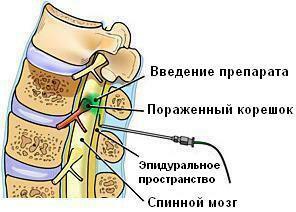
Blockade of the spine
An approximate treatment regimen involves the use of the following drugs:
- Non-steroid drugs with anti-inflammatory action. Thanks to such drugs, the pain syndrome is blocked and inflammation is eliminated. In addition, you can get rid of puffiness, which occurs in the nerve root due to a strong squeezing. This group of drugs is selected by a specialist individually( Dicloberte, Voltaren).
- Muscle relaxants. Promotes muscle relaxation, quickly relieving stress( tizanidine).
- Vitamin complexes based on B group vitamins( Milgamma, Kombilipen).
- Means to improve blood flow( Curantil, Escuzan).
- Preparations for the removal of edema( Diakarb).
- Special drug blockade( lidocaine).
Warning! Self-medication and use of medicines, which the Internet tells about, is strictly forbidden. Treatment is prescribed only by a specialist after an accurate diagnosis.
Operative treatment
When the use of drugs in combination with physiotherapy does not provide any efficacy, the patient is shown surgical intervention. Thanks to the operation, strangulated nerve roots are released.
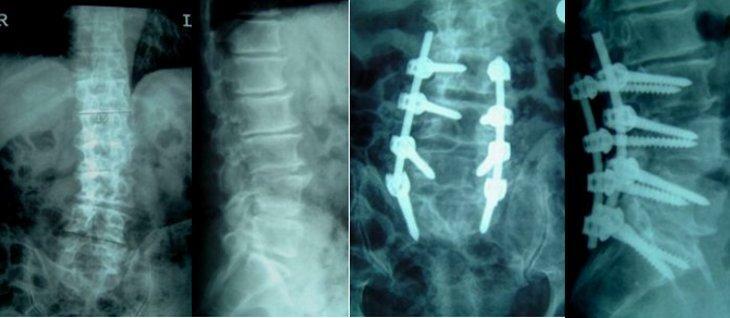
Surgical treatment of stenosis
Basic techniques:
- Decompression laminectomy. Pathology is eliminated by removing a small part of the vertebral arch and intervertebral joints, due to which a small extension of the tubule occurs. This method refers to traumatic and is used exclusively at the initial stages of the disease.
- Stabilizing operation. Often carried out as an additional surgical procedure for decompression laminectomy. It can strengthen the musculoskeletal function of the spine. That is, after carrying out the above operation, the patient needs to strengthen the vertebral column, and for this, staples are used.
- Microsurgical decompression. This is a more physiological operation than stabilizing. It is also used to strengthen the spinal column.
- Types of operations for the removal of a hernia. If the root cause of stenosis is a hernia, then for the elimination of pathology special surgical intervention that removes the tumor( laser vaporization, microdiscectomy) is used.
On the treatment of spinal stenosis and other details will tell a video.

